Missouri race protests: Why was the university president forced out?
- Published
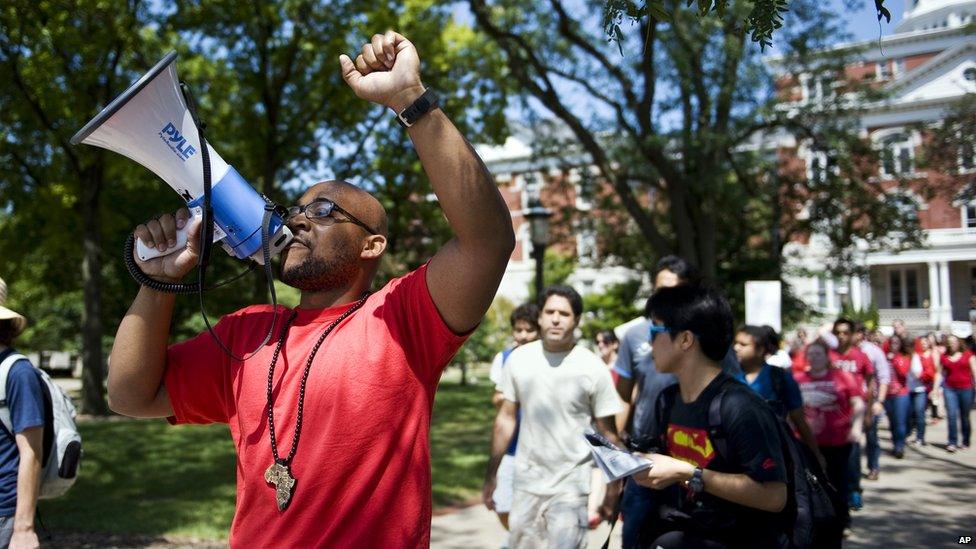
Jonathan Butler, pictured here before he began a hunger strike
Months of protests over claims of racism at the University of Missouri have forced its president to step down. So how did things come to this point?
In his resignation statement, Tim Wolfe said he took full responsibility for the "inaction".
1. What were the race issues on campus?
On 11 September, the head of the Missouri Students Association, Payton Head, was walking through campus when a group of men began to scream racial insults at him, including the "N-word".
In a Facebook post afterwards, he expressed his hurt and disappointment at what happened.
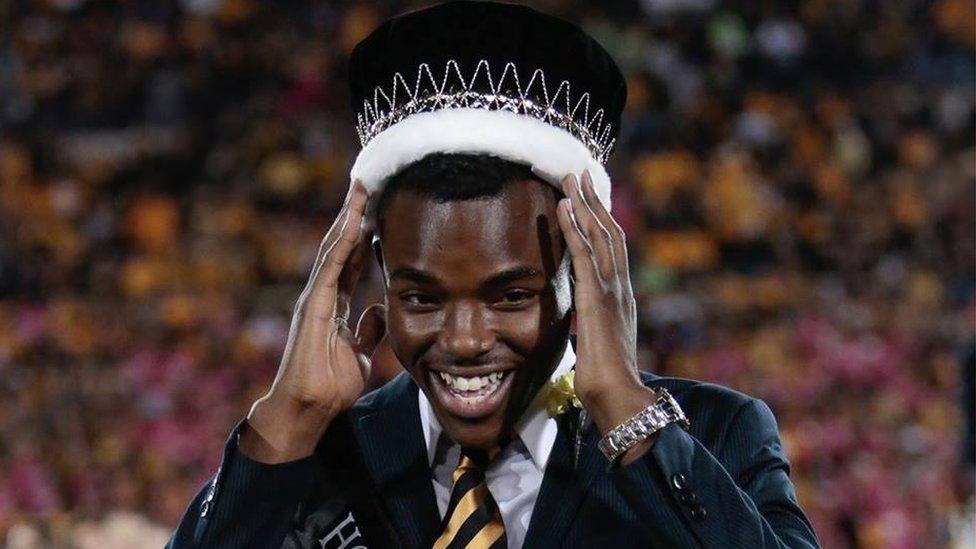
Payton Head says he was the victim of racism on campus
"I really just want to know why my simple existence is such a threat to society. For those of you who wonder why I'm always talking about the importance of inclusion and respect, it's because I've experienced moments like this multiple times at THIS university, making me not feel included here." he wrote.
He went on to detail occasions where he and his friends had been spat on or had drinks thrown at them because of their race, gender or sexuality.
A few weeks later, more racist incidents were reported at the university. A group of black students said they were subjected to racial slurs by a drunk white student. Black students said their complaints were ignored by academic officials, although the university said a student was removed from campus, external in connection with the latter.
But perhaps the most shocking racial incident, external occurred at the end of October, when a swastika - drawn in excrement - was found in a university toilet.
2. How did students respond?
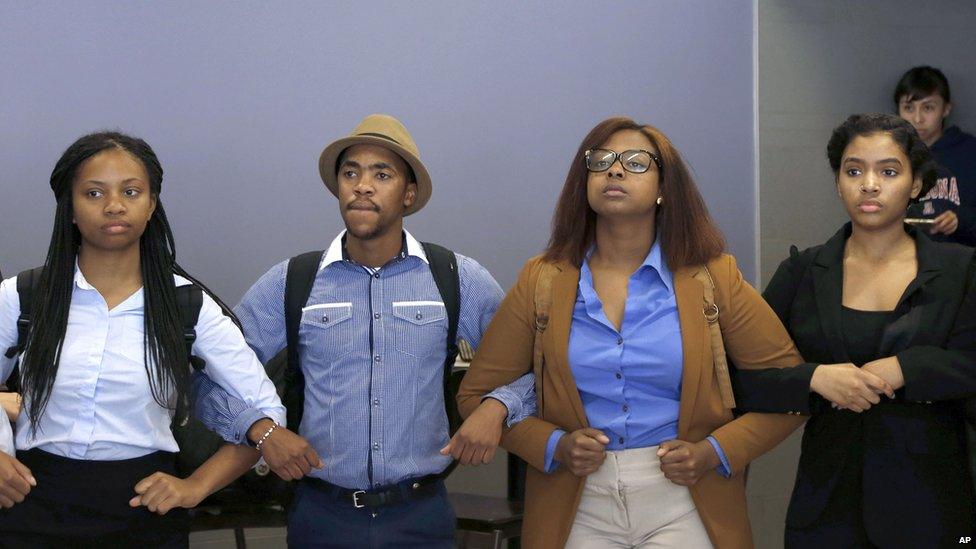
Students protest in the wake of a spate of race issues at the campus
The first big demonstration in support of rights for black students was during the annual homecoming parade in October. The protesters blocked the route and the car carrying Mr Wolfe.
Many of them were activists from the group, Concerned Student 1950, which named itself after the year the university first began admitting black students.
Students say their pleas fell on deaf ears despite repeated requests, external for officials to look into allegations of racism.
In the past week activists staged a sit-in at the campus and academics threatened to walk out of classes unless the issues were addressed. Graduate student Jonathan Butler went on a hunger strike in a bid to force Mr Wolfe out.
Then 30 black members of the university's football team, the Tigers, boycotted practices and threatened to sit out of this Saturday's game unless Mr Wolfe quit. That would have cost the university millions.
3. What changes were students campaigning for?
University of Missouri president resigns
The biggest scalp students were after was that of Mr Wolfe, who many blamed for failing to address the endemic race problems on campus.
After days of intense pressure, he stepped down on 9 November and said he hoped his resignation would allow changes to be made.
"Let's focus on changing what we can change today and in the future, not what we can't change, which is what happened in the past."
As part of their campaign, Concerned Student 1950 drew up a list of demands, external, which included mandatory lessons on racial awareness to be introduced for students and staff, an increase in black teaching staff, and extra resources to be devoted to mental health support, including hiring more people of colour in these roles.
4. How common are these problems?
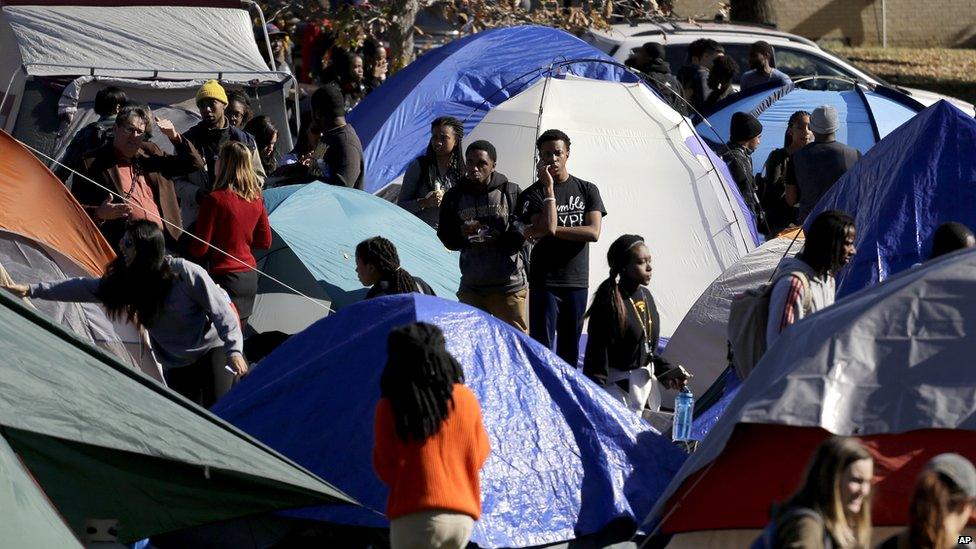
Students set up tents on campus as part of their protests
Protests against racism at Mizzou, as it is known, are nothing new. Back in 1935 Lloyd Gaines was denied admission in his bid to become the university's first black law student. Decades after the civil rights movement and the desegregation of education establishments, complaints of discrimination persist.
As recently as last month, black students at Yale University said they were refused entry to a fraternity party on grounds of their race. The alleged incident opened up a wider conversation about discrimination on campus. University officials promised to create greater inclusion.
5. What happens now for students?
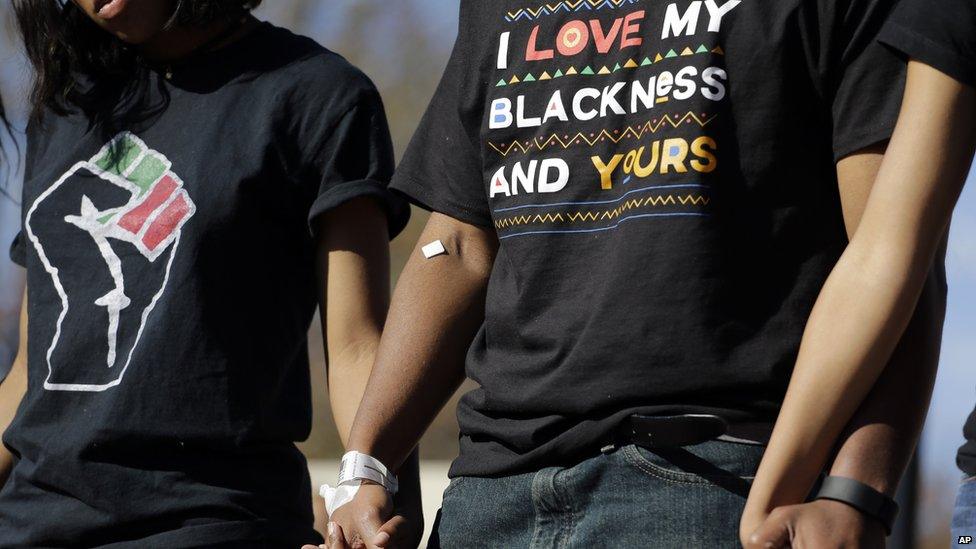
The challenge for protestors is turning their actions into lasting change on campus
"This is not a moment. This is a movement," said Jonathan Butler after he stopped his hunger strike. But the real measure of success for these protests will be whether there are changes at the university, and whether the demands of Concerned Student 1950 are met.
Much of this depends on who replaces Mr Wolfe, and how incidents on campus are dealt with in the future.
Some goals, like implementing a more diverse workforce, could take time. Achieving this, and changing the racist mindset of some students, will take more than just a change at the top.